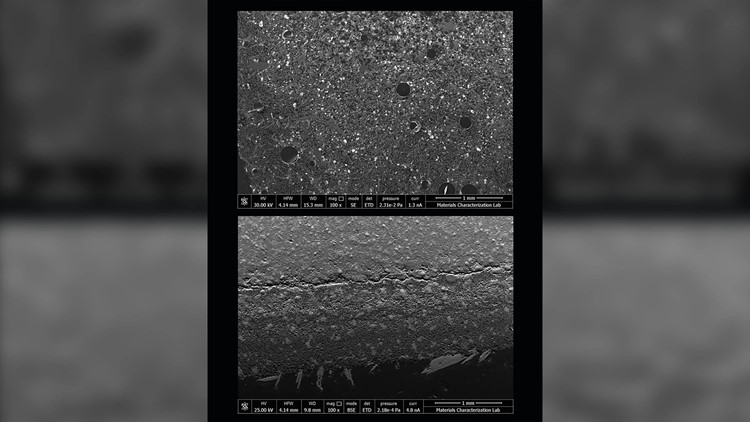You could say things are getting a little more concrete on the International Space Station.
Astronauts on the station often share beautiful images and time lapses they capture from their unique vantage point 220 miles above the Earth. But they’re also working on hundreds of experiments on the floating laboratory every day.
One recent experiment included mixing an aqueous solution with tricalcium silicate for the first time — a scientific way of saying concrete. The basic ingredients for concrete include sand, gravel and rocks mixed with a cement powder and water-based paste. It sounds as easy as whipping up cake mix, but the actual process is much more difficult.
And the lack of gravity changes everything.
Astronauts participated in the Microgravity Investigation of Cement Solidification project to understand how the chemistry of concrete is changed by zero gravity, down to the microscopic structures inside it.
“How will it harden? What will be the microstructure?” said Aleksandra Radlinska, principal investigator of the experiment at Pennsylvania State University. “Those are the questions we’re trying to answer.”
The paper published this week in the journal Frontiers in Materials.
A variety of mixtures were made where the cement powder, additives, water and time allowance varied. The researchers studied how the cement powder dissolved in the water because this is when those molecular structures shift to create interlocking crystals.
The space station mixtures were compared to samples mixed on Earth. The cement paste on Earth ended up being more porous, which is intriguing because more open spaces in the concrete would affect its strength.
“Increased porosity has direct bearing on the strength of the material, but we have yet to measure the strength of the space-formed material,” said Radlinska. “Even though concrete has been used for so long on Earth, we still don’t necessarily understand all the aspects of the hydration process. Now we know there are some differences between Earth- and space-based systems and we can examine those differences to see which ones are beneficial and which ones are detrimental to using this material in space.”
Radlinska also noted that the samples were mixed in sealed pouches, which begs the question of what might happen had they been mixed in an open environment in space.
Understanding how concrete works in space has direct bearing on future plans regarding the moon and Mars, according to NASA. Building safe habitats on either of these surfaces may rely on concrete because it could protect humans from meteorites and harmful radiation.
Materials already available on Mars or the moon could also be used to make the concrete. Moon dust, known as regolith, could be an ingredient in space-based concrete. Having materials already on hand would reduce the cost of transporting materials.
There’s currently an experiment on the space station looking at cement samples that include simulated lunar particles.
“On missions to the Moon and Mars, humans and equipment will need to be protected from extreme temperatures and radiation, and the only way to do that is by building infrastructures on these extraterrestrial environments,” Radlinska said.
“One idea is building with a concrete-like material in space. Concrete is very sturdy and provides better protection than many materials.
“We confirmed the hypothesis that this can be done. Now we can take next steps to find binders that are specific for space and for variable levels of gravity, from (zero gravity to Mars gravity) and in between.”



